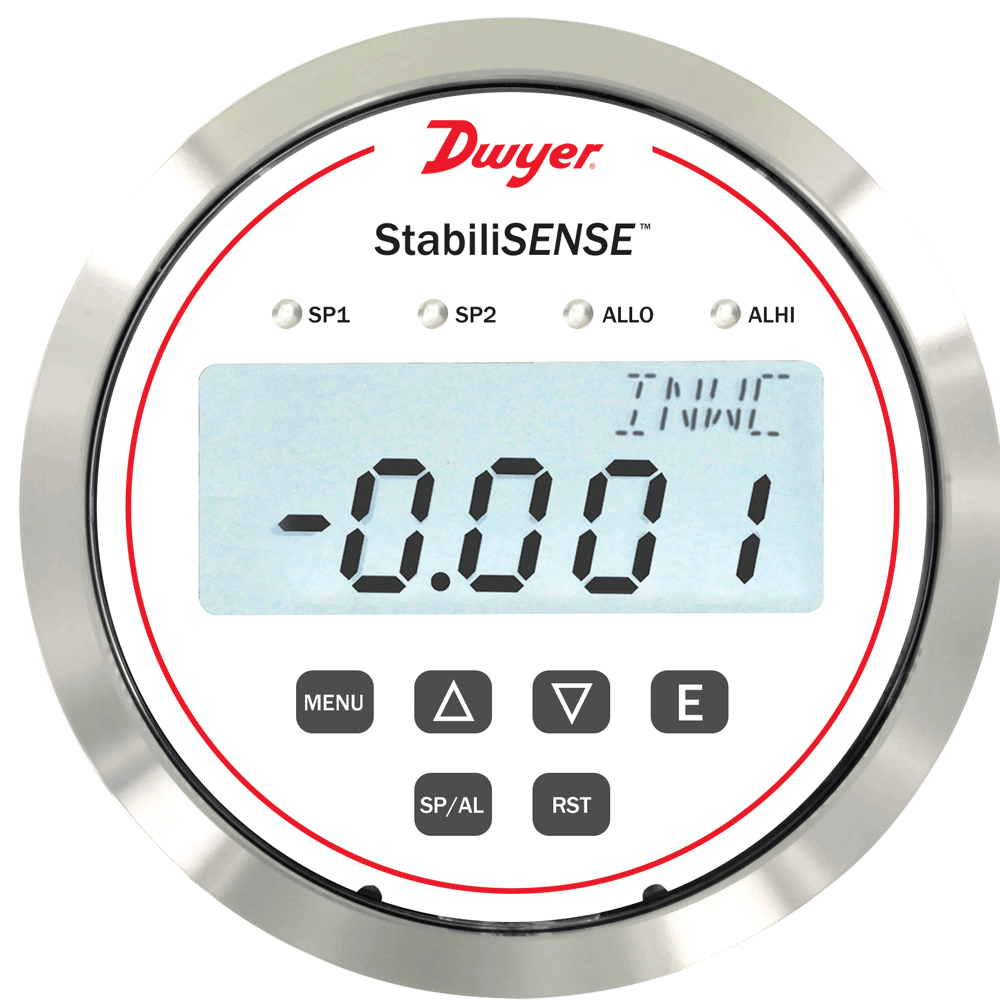
Stability is defined as a change (or lack of change) in accuracy over a period of time.
Stability reduces out-of-calibration issues. If a measurement device drifts out of calibration, it can be measured incorrectly and risk exposure of personnel or patients to harmful microorganisms in pressure monitoring applications in healthcare settings.
If pressure, temperature, and relative humidity (RH) are not maintained properly in semiconductor manufacturing areas, it may result in infiltration of dust and particulates from not maintaining a proper differential pressure, a spike or drop in RH, or a change in temperature, which may damage products being manufactured.
Dwyer’s new Series RPMC StabiliSENSE™ critical room pressure monitor provides the advanced features, high accuracy, and ranges necessary for use with pharmaceutical compounding areas and semiconductor manufacturing facilities.
The Series RPMC StabiliSENSE™ critical room pressure monitor can be flush or surface mounted in the same size diameter hole as a Magnehelic® gage. This simplifies upgrades from a Magnehelic® gage to the new room pressure monitors. It comes standard with two independent SPDT relays and a 4-20 mA analog output. The RPMC contains a capacitance cell pressure sensor, providing a high degree of accuracy and long-term stability.
The Series RPMC is a complete system allowing for access to pressure, security, calibration, and alarm setup. Visual indication, an easy-to-clean stainless steel bezel, and passcode protection make pressure monitoring in critical applications easier than ever.
If you have any questions, the Dwyer Sales & Applications Engineers are available to assist you. Contact us please, [email protected].
